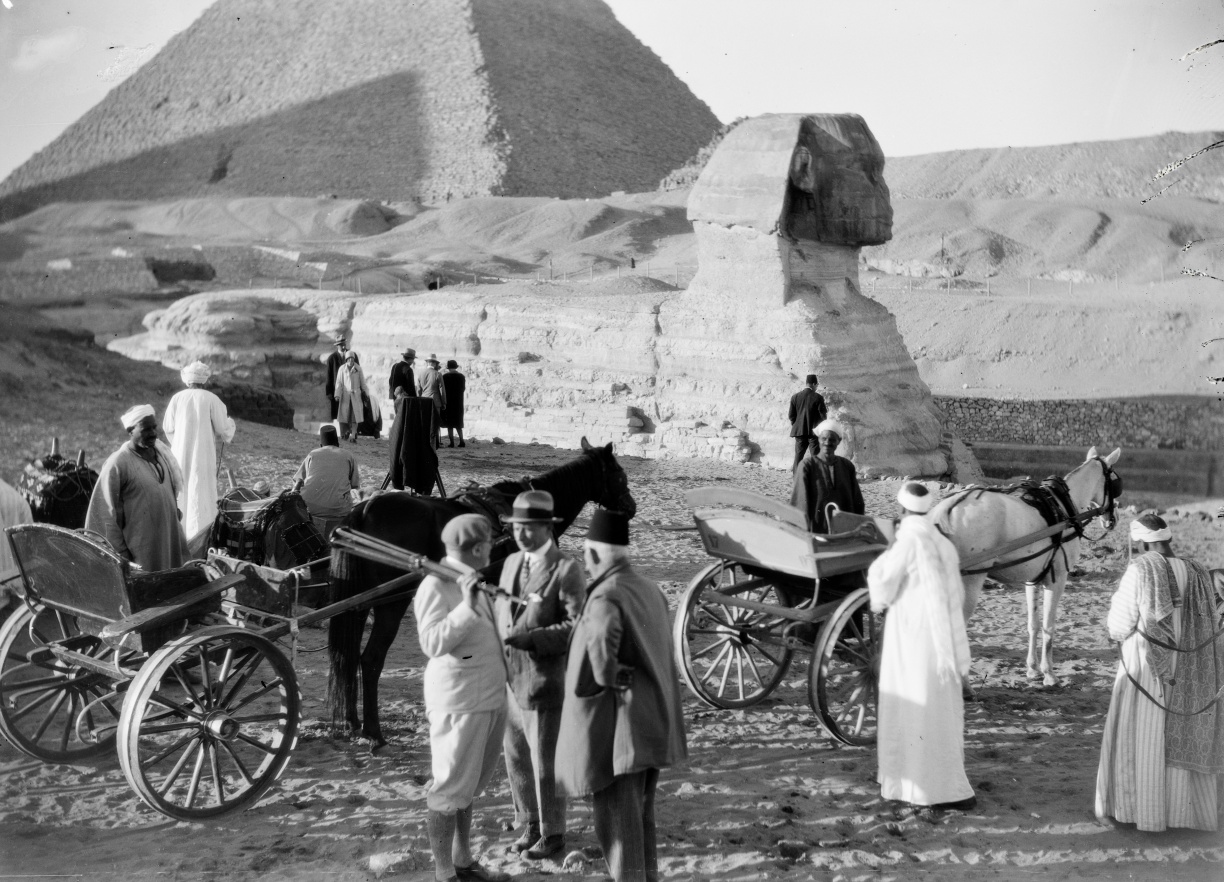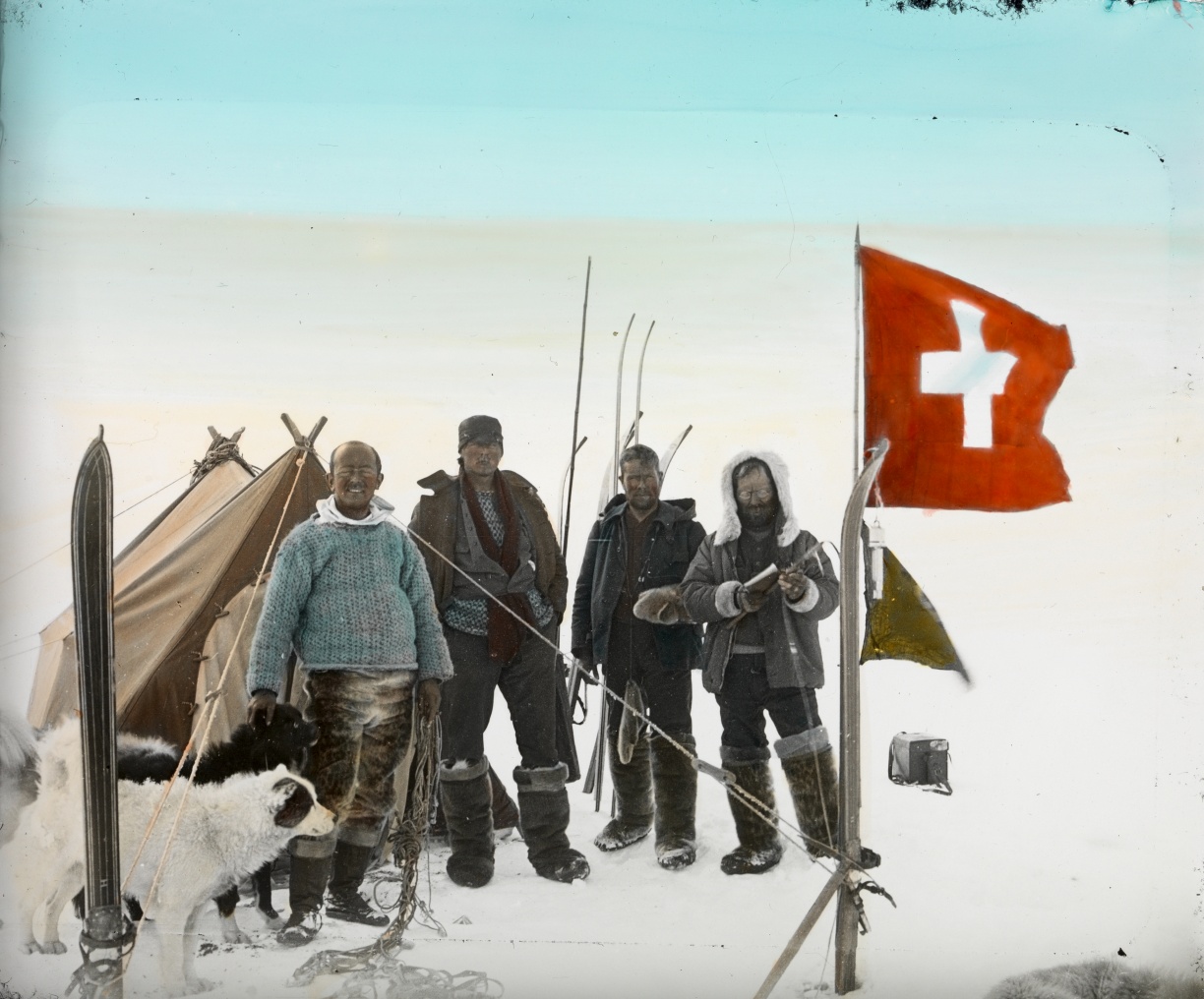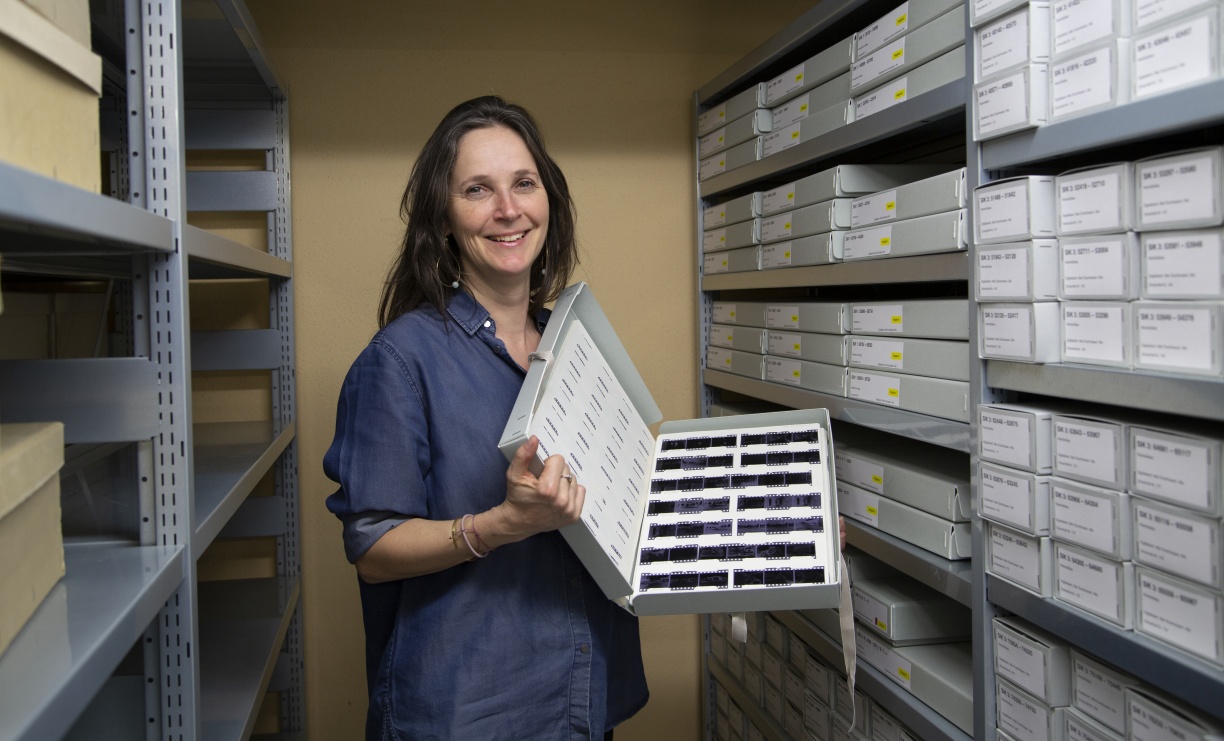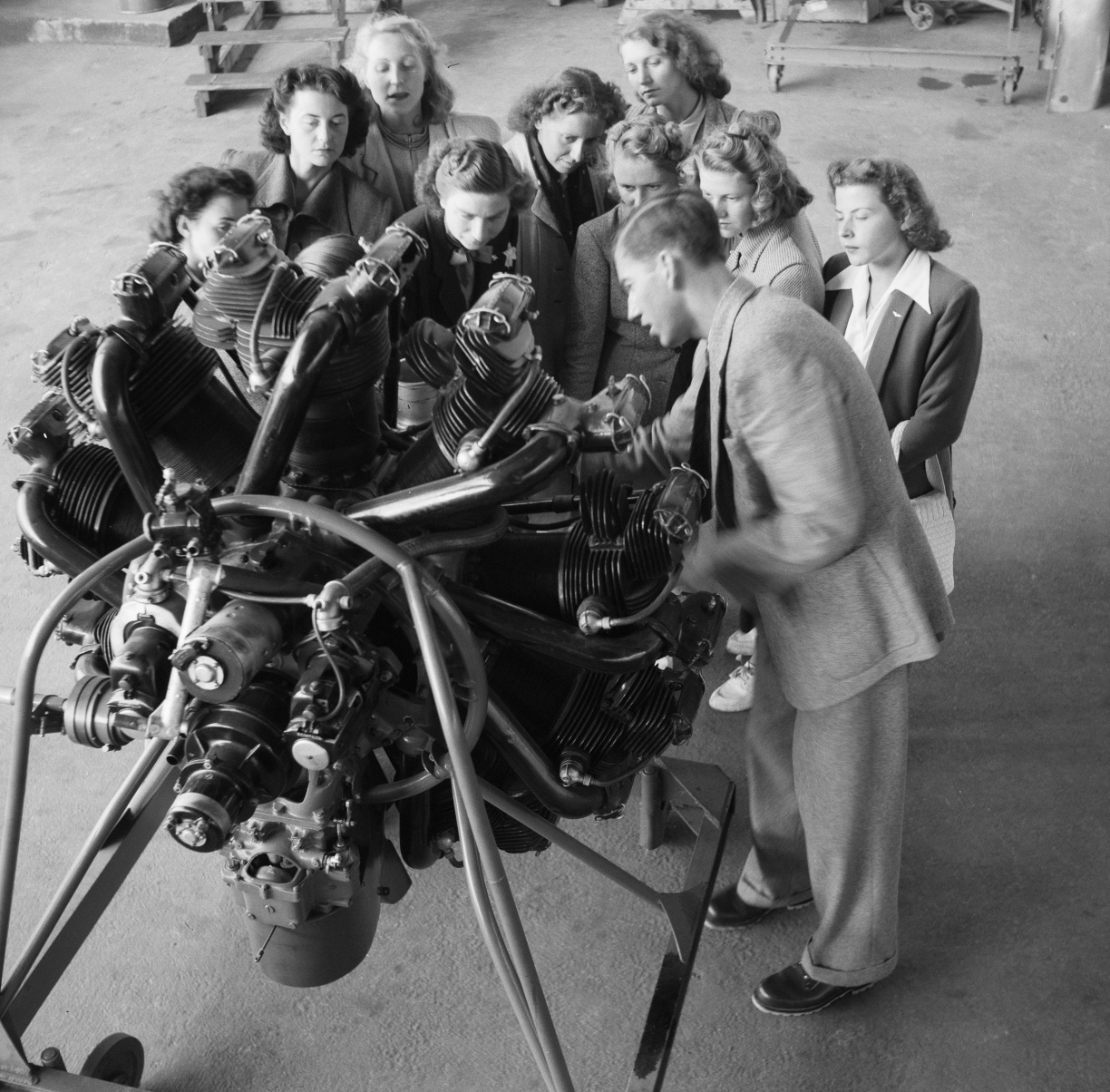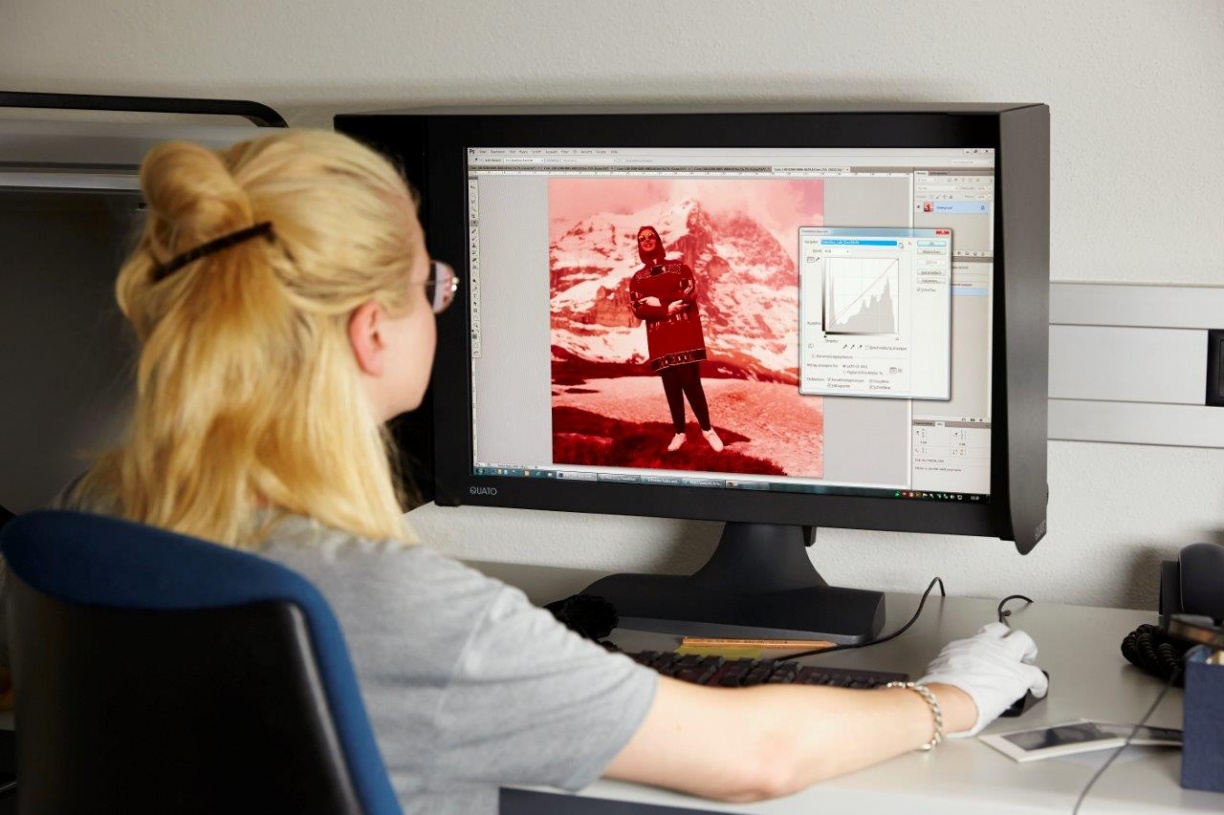May 2019
Managing the ETH Library Image Archive, which has been my full time role since March 2008, involves many different responsibilities. I am fond of saying that the Image Archive is like a library within a library. Specifically, together with my team of five salaried staff (3.7 full time equivalent posts) and four student assistants (1.3 full time equivalent posts) we cover the four classic library work processes for the most part ourselves: from acquisition, cataloguing, and providing access to archiving.
The acquisition of images conforms to the ETH Library's acquisition and collection strategy (doi.org). These include images from the natural and engineering sciences, aerial photographs, views of rural and urban locations, as well as portraits of ETH personalities. In addition to the content of the image, there are further criteria such as its completeness, usage rights, any available metadata, and physical condition. If the image is in line with our collection strategy, it is very likely to be accepted into our collection. We turn an item down if its particular topic is already extensively covered, or if a collection does not suit our profile. For example, no one would look for fashion photographs at the ETH Library Image Archive.
Fairly small image collections from ETH Zurich institutes or professors are regularly adopted. Similarly, we frequently accept images from private sources if they are linked with ETH and its research fields. Occasionally, we transfer selected large collections from private individuals, companies, or foundations. Some of our collections are well-known, such as the archive from the liquidated Zurich image agency Comet Photo AG, Adolf Feller's postcard collection of over 50,000 early postcards from all over the world, the Luftbild Schweiz AG archive with its part-collections of aerial images contributed by Walter Mittelholzer, the Swissair photographic archive, and the images from the Stiftung Industriekultur Schweiz of Hans-Peter Bärtschi. Currently, our entire collection comprises approximately 3.5 million images: predominantly photographs from 1860 onward.
The collections focus on themes relevant to Switzerland as a whole. The Swissair aerial photograph archive with some 100,000 aerial photographs from the Stiftung Luftbild Schweiz foundation is a good example. We have been engaged in digitising this collection since 2011 and during the first quarter of 2019 the project will be completed. Incidentally, at the end of 2018, we published a background story of aerial photography on our storytelling platform Explora (explora.ethz.ch). Of course, there are other collections such as those from the early research expeditions by our ETH professors that relate to many different regions of the world as a whole.
The growing reputation of the ETH Library Image Archive amongst the population in recent years has led to an increase in offers from private individuals. At present, we are somewhat inundated by photographic slides. It really is an inundation because these collections, which can cover a period of up to 50 years, often contain tens of thousands of slides. These kinds of collections are usually themed compilations of images – of orchids, parasites, or architecture for example and may represent a life's work of an individual photographer. Ideally, we receive the images directly from the photographer who preferably transfers to us the rights for digitalisation, online publication, and unrestricted use of the photographs.
In view of the ever-growing collections, evaluation is a key issue that preoccupies every (image) archive. This is by no means purely a digital photography phenomenon: it goes all the way back to the start of the 20th century when cameras became easier in use and photography materials became more and more affordable. No two collections are put together the same way. Each collection has to be evaluated as it stands. Almost every stage of the process involves a decision. Is this collection worth adopting at all? If it is adopted, will it be catalogued and worked on straight away? Will it be digitised and if so, in its entirety or only partially? Who is to select the images for digitisation and according to what criteria? And so on.
In our image database E-Pics Image Archive Online (ba.e-pics.ethz.ch), there are currently some 425,000 images online. In the image database E-Pics Animals, Plants, and Biotopes (biosys.e-pics.ethz.ch), which is also maintained by the image archive, there are around 50,000 images. The ETH Library's internal DigiCenter digitises 60,000 to 80,000 of our images annually, of which an average of 30,000 to 40,000 are already catalogued and available for displaying online. The collections are prioritised for digitisation. In most cases, they are prioritised according to content criteria. However, there can be conservation considerations that prompt the processing of a collection since photographic material is continuously subject to chemical deterioration.
My team and I have found that open crowdsourcing has had an important impact on our working processes in the Image Archive and has led since January 2016 to a new field of activity. We began using crowdsourcing, as it is known, back in 2009. Over a period of four years, Swissair retirees have identified 40,000 digitised and often badly or incorrectly labelled images and have improved on their titles and descriptions. Eventually, in December 2015 we launched a comments function within our image database so that users could add a comment to each image. Thanks to a major media response in the Neue Zürcher Zeitung, NZZ, newspaper, the Swiss TV news programme Tagesschau, and on the radio, we have been able to build up a loyal and hard-working community. We receive 1,200 emails per month and we manually incorporate their content into existing metadata, such as title, author, description, or date.
We publish information about new images and the monthly statistics on our crowdsourcing blog (blogs.ethz.ch), which went online shortly after the media hype in May 2016. I quickly realised that we needed to communicate with the Crowd because otherwise the interest could have rapidly dissipated. Accordingly, in the weekly Monday blog there is a post entitled "Do you know more?" in which we introduce new images to be identified. Then, on the following Friday there is another entitled "You knew more! Thank you!" In this post we showcase the most interesting images from the past week. The blog is an important tool for the community management that is very time and resource intensive. Additionally, we organise annual meetings with the Crowd to encourage the exchange of ideas and information. We have published a video in which six different volunteers show how they go about identifying images (youtube.com). I have regular opportunities to report on our successful crowdsourcing project at conferences (all these talks are available in our research collection at research-collection.ethz.ch).
Since February 2018, our Crowd is able to georeference select images in a fun way on the collaborative crowdsourcing platform sMapshot (smapshot.heig-vd.ch). But one need to know: all this can be highly addictive! Thanks to sMapshot, we use the geographic footprint to identify a wealth of further geo-metadata. As a result, the metadata of the view of a location record not only the location as title, but also its general area, any rivers, and mountains as searchable metadata. This means that an image search can be much more precise and that new connections can be made between images and their geographic applications. Metadata are a traditional field for archives and libraries. What is new, though, is that interested volunteers are now helping us with metadating images.
There is so much more I could tell you! However, returning to the key concept of providing access, I would like to conclude by mentioning our books of images entitled "Bilderwelten" that are published by Scheidegger & Spiess as well as our exhibitions such as the recent one on Walter Mittelholzer held in the Zurich Landesmuseum in summer 2018.
Nicole Graf, lic. rer. soc., MA Image Science
Born in 1970 and raised in Eastern Switzerland. Education as librarian (BBS) at the National Library in Bern, studies sociology, constitutional law and modern Swiss history at the University of Bern. Scientific assistant, scientific assistant editor at the University of Bern and freelance film journalist at the "Berner Zeitung". Since 2008 head of the image archive of the ETH-Bibliothek in Zurich. Co-editor of the series "Bilderwelten. Photographs from the ETH Zurich Picture Archive" (Scheidegger & Spess, Zurich, from 2011). Master's degree in Image Science at the Danube University in Krems (A). Since May 2016 also blogger on the library's own Crowdsourcing-Blog.
